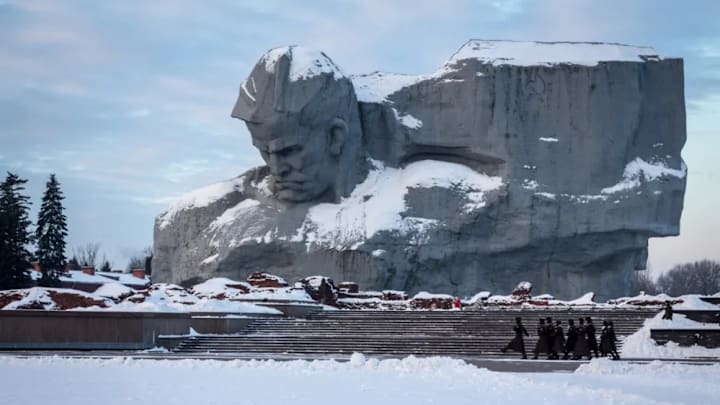Some Communist memorials lie in ruins, while others have found a vibrant afterlife.
Darmon Richter is a British travel writer and researcher with a particular interest in the ideological architecture of Eastern Europe. He leads tours to Communist-era monuments in seven countries.
There is something poignant about a deteriorating monument: more than just a snapshot of decay, these structures speak to larger themes—abandoned ideas, fading memories, empires in decline.
Yet while the internet loves to share photographs of Eastern Europe’s decaying monuments, too often they’re painted as “abandoned” and “forgotten” when the reality is more complex. The challenges faced by communist memorials vary greatly from one site to the next, and today many communities are facing questions about whether to preserve the sites as works of art or whether to tear them down as the propaganda of an often-painful past.
In Croatia, for example, the Jasenovac Memorial Site is built around a 78-foot “Stone Flower" that rises above a former WWII concentration camp. Far from abandoned, the site features a comprehensive museum and hosts remembrance gatherings. The memorial park was constructed in the 1960s by Communist Yugoslavia, but its message is appreciated today by communists and anti-communists alike. Elsewhere in Croatia, though, other monuments of the era have fared less well. Meanwhile in Ukraine, where the Soviet legacy is more tied to memories of hunger and cruelty, a recent ruling outlaws communist symbols altogether—and Soviet monuments are nearing extinction.

In Belarus—where the Soviet period is remembered by many with wistful, rose-tinted nostalgia—the Communist-era Brest Hero Fortress is remarkably well-preserved. Music booms from speakers by the entrance, young cadets guard the eternal flame, and caretakers wear jackets marked with the monument’s own branding.

The 1971 Šušnjar Memorial Complex at Sanski Most, dedicated to a local battle between Serb rebels and Croatian fascist forces, has seen better days.

The Memorial House of the Bulgarian Communist Party on Buzludzha Peak was erected in 1981 to commemorate the history and achievements of the Socialist movement in Bulgaria. Today, the public display of communist symbols has been criminalized in Bulgaria, and the saucer-shaped memorial has been left to rot, doomed largely by its own symbolic language of hammers and sickles and stars.

Abandoned to the elements in the 1990s, the elaborate interior mosaics of the monument on Buzludzha Peak have been severely decayed by wind, rain, and snow.

The Monument to the Uprising of the People of Kordun and Banija, at Petrova Gora in Croatia, was built to commemorate the local struggle of WWII-era Serb partisans defying a fascist Croatian regime, a message that doesn’t sit comfortably with contemporary Croatian politics. Now unmaintained, the 120-foot memorial house has decayed to little more than a shell.

Built in 1967, this Monument to the Revolution of the People of Moslavina in Podgarić, Croatia, commemorates another local uprising against the Croatian Ustaše. It’s in better condition than the one at Petrova Gora, and still receives a steady stream of visitors.

The Makedonium at Kruševo, Macedonia, commemorates a 1903 uprising against the Ottoman Empire. Built by Communist Yugoslavia in 1974, the structure contains a colorful museum focused on local revolutionary history.

The 1972 Monument to Freedom at Berane, Montenegro, is shaped like a bullet to commemorate local fighters who fell in WWII.

Fresh flowers are periodically laid at this 1969 Monument to the Brave in Ostra, Serbia, erected in remembrance of the local partisan division who stood up to fascist occupation in 1944.

The 1981 Mausoleum to the Fallen Insurgents against Fascism, known as "The Sniper,"in Popina, Serbia, is shaped to resemble the sights on a rifle. It has fallen into disrepair since the collapse of Yugoslavia.
